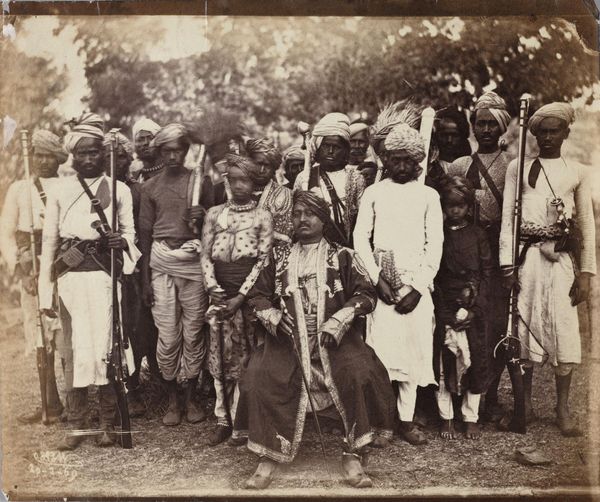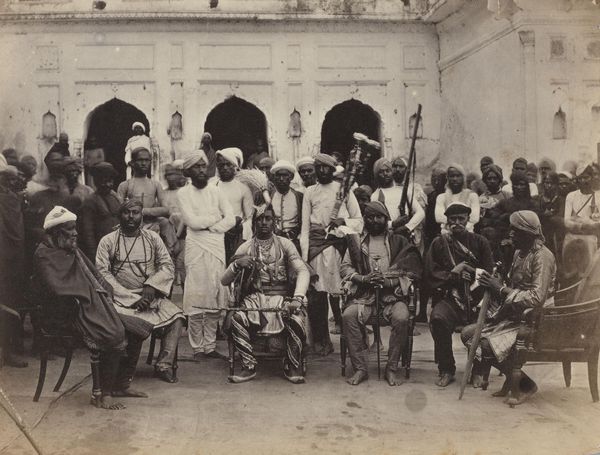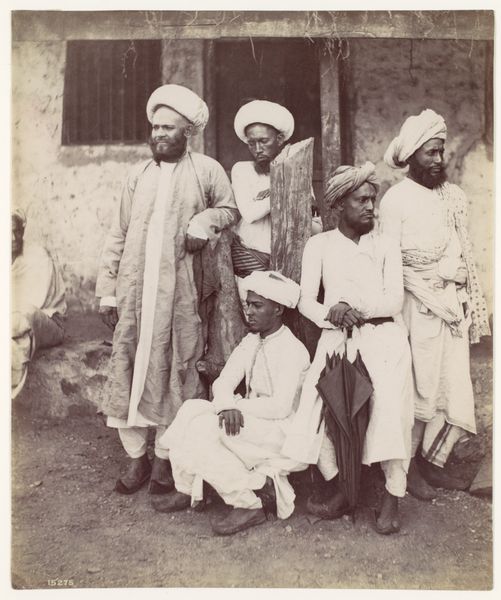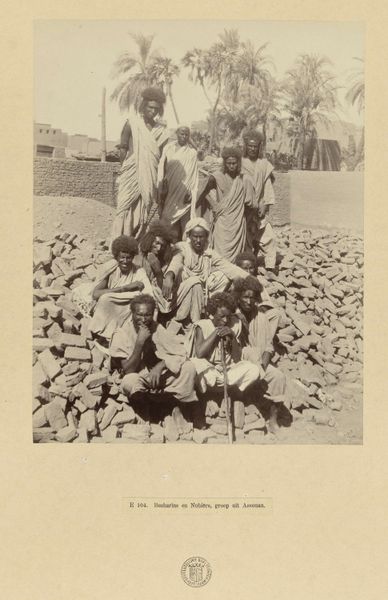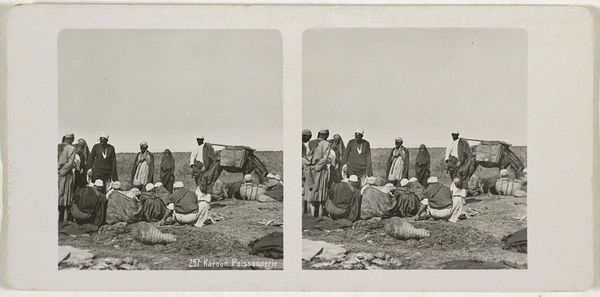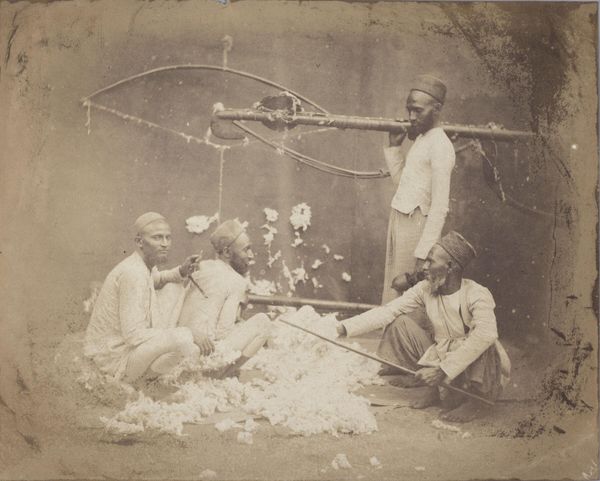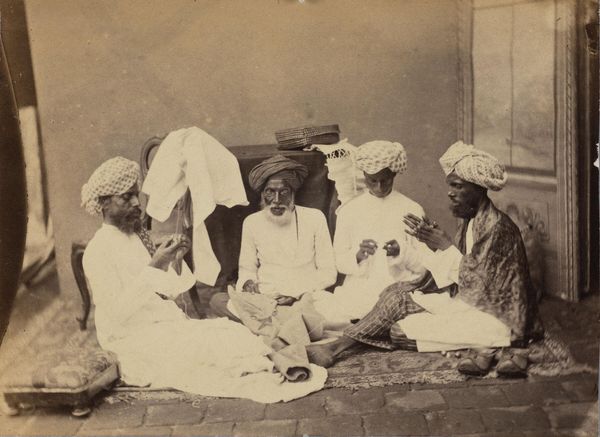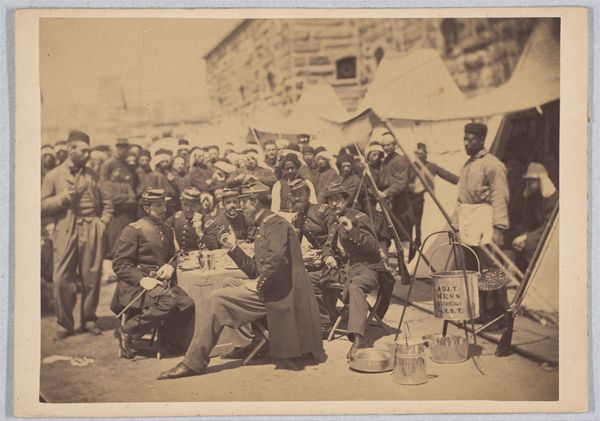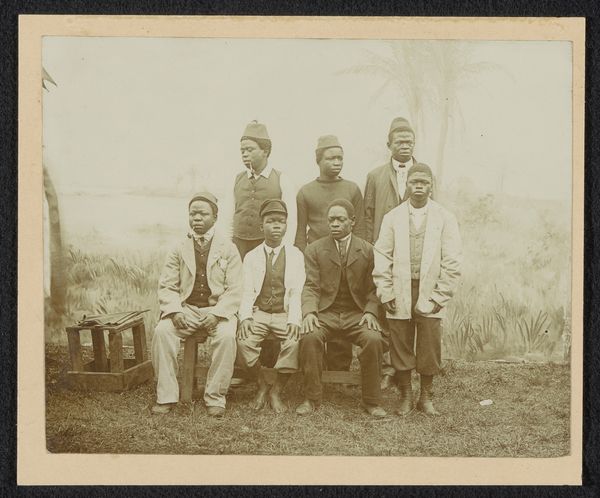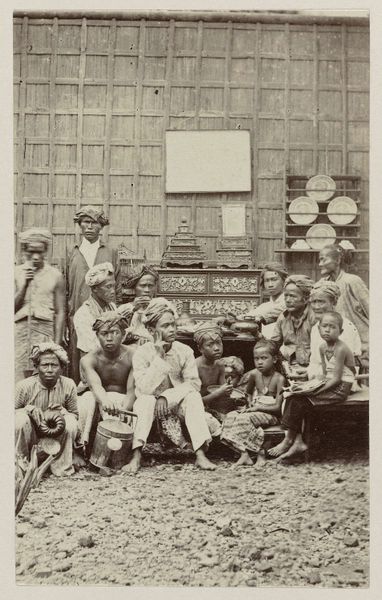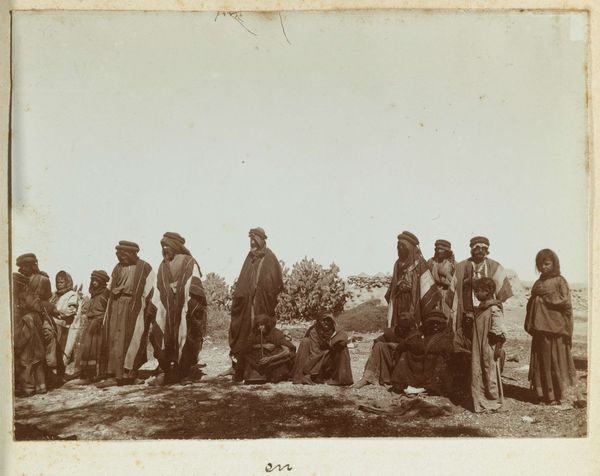
Groepsportret van een Afghaans-Britse legereenheid bij het Jamrud Fort in de Khyberpas tijdens de Tweede Brits-Afghaanse Oorlog, rechts van het midden kapitein Tucker 1878 - 1879
0:00
0:00
photography
#
photography
#
group-portraits
#
orientalism
#
history-painting
Dimensions: height 234 mm, width 290 mm
Copyright: Rijks Museum: Open Domain
Curator: What a compelling image. This photograph by John Burke, dating from between 1878 and 1879, is titled “Groepsportret van een Afghaans-Britse legereenheid bij het Jamrud Fort in de Khyberpas tijdens de Tweede Brits-Afghaanse Oorlog, rechts van het midden kapitein Tucker.” Editor: My first impression is of striking textural contrast, you have these rugged rock formations paired with the variety of fine fabrics on the subjects clothing; it really draws the eye around. And of course, the light plays beautifully on these details, despite the apparent difficulties of the outdoor conditions. Curator: Indeed. Burke was documenting a specific historical moment: the Second Anglo-Afghan War. The image underscores the collaboration, or perhaps more accurately, the co-opting, of Afghan forces within the British military structure. We see them posed formally in front of the Jamrud Fort, a symbol of British imperial power in the region. Editor: Absolutely. Compositionally, the arrangement directs our view in a controlled and hierarchical fashion. Look at the positioning, those figures in front sitting versus those standing in the back on top of the walls; note also how most men appear to be looking toward the assumed camera location, except a few. But is this staging also obscuring certain cultural complexities that were playing out at the time? Curator: Undoubtedly. The photograph is carefully staged. It's not a candid snapshot; it’s a constructed image intended to convey a certain message about British authority and the integration of local forces. This is where the power of the orientalist gaze comes into play, romanticizing, and controlling representation of its subjects. Editor: You're right, but it's hard to disregard the meticulous organization of elements as such; they are not at odds. The interplay of light and shadow also enhances the overall structure by framing certain sections of the composition and obscuring other sections. How the human and the natural work together toward communicating that visual story is of interest. Curator: And this is what makes such historical images so compelling, right? They reflect the complexities of the time period. Even when controlled for imperialist motives, some sliver of reality and shared struggle emerges to break those bonds. Editor: It really comes through. Thinking about the careful visual strategy the photographer used to achieve it gives me the space to re-examine the impact the photograph had back then and the resonance it still has now.
Comments
No comments
Be the first to comment and join the conversation on the ultimate creative platform.
